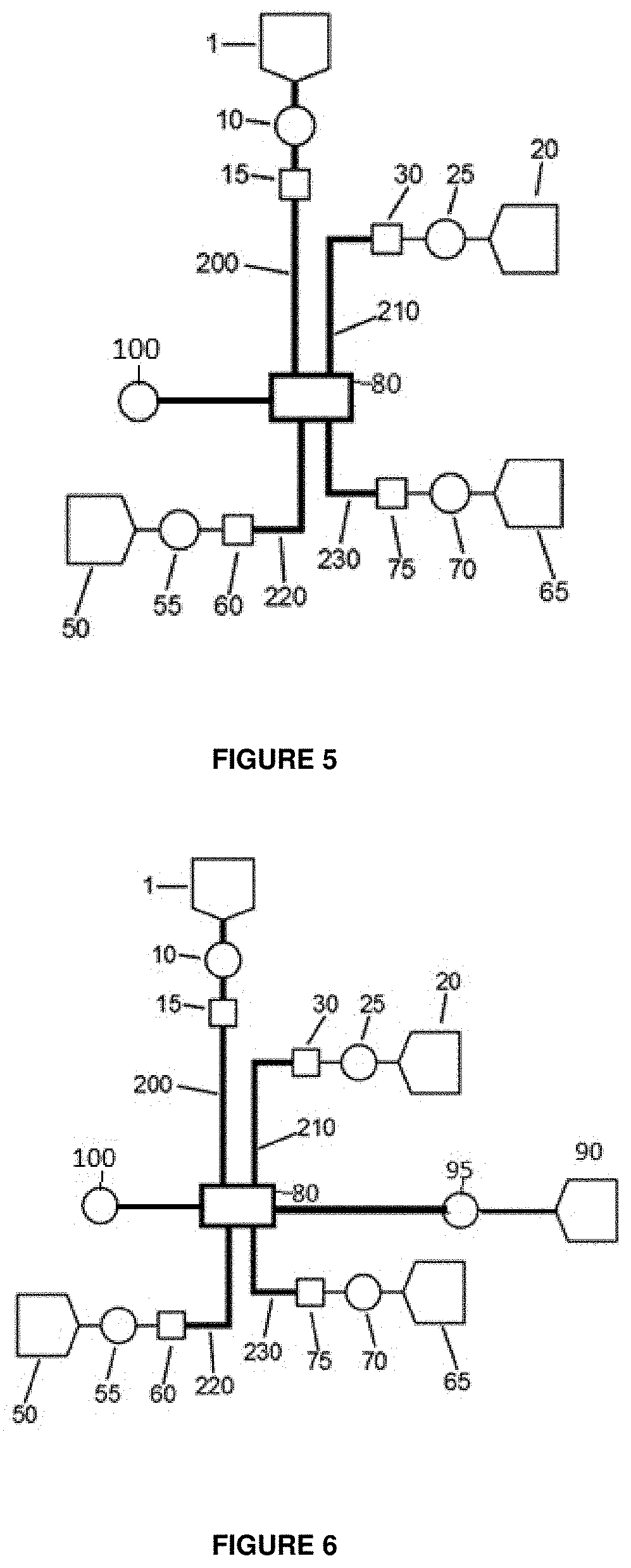Secondary battery pack with improved thermal management
a secondary battery and thermal management technology, applied in the direction of batteries, cell components, electrochemical generators, etc., can solve the problems of rechargeable batteries, the switch in drive train technology is not without its technological hurdles, and the type of batteries is not without its drawbacks, so as to achieve the effect of reducing personal and property risks
- Summary
- Abstract
- Description
- Claims
- Application Information
AI Technical Summary
Benefits of technology
Problems solved by technology
Method used
Image
Examples
examples
I) Definition of the Components
[0191]Organopolysiloxane A1=polydimethylsiloxane with dimethylvinylsilyl end-units with a viscosity at 25° C. ranging from 80 mPa·s to 120 mPa·s; Organopolysiloxane A2=polydimethylsiloxane with dimethylvinylsilyl end-units with a viscosity at 25° C. ranging from 500 mPa·s to 650 mPa·s;[0192]Organopolysiloxane B1 (CE) as chain extender=polydimethylsiloxane with dimethylsilylhydride end-units with a viscosity at 25° C. ranging from 7 mPa·s to 10 mPa·s and formula: M′DxM′
In which:[0193]D is a siloxy unit of formula (CH3)2SiO2 / 2 [0194]M′ is a siloxy unit of formula (CH3)2(H)SiO1 / 2 [0195]and x is an integer ranging from 8 to 11;[0196]Organopolysiloxane B2 (XL) as crosslinker, with a viscosity at 25° C. ranging from 18 mPa·s to 26 mPa·s, over 10 SiH reactive groups are present (in average from 16 to 18 SiH reactive groups): poly(methylhydrogeno) (dimethyl)siloxane with SiH groups in-chain and end-chain (α / ω),[0197]Hollow glass beads D1: 3M™ Glass Bubbles Ser...
PUM
| Property | Measurement | Unit |
|---|---|---|
| density | aaaaa | aaaaa |
| weight percent | aaaaa | aaaaa |
| temperature | aaaaa | aaaaa |
Abstract
Description
Claims
Application Information
 Login to View More
Login to View More - R&D
- Intellectual Property
- Life Sciences
- Materials
- Tech Scout
- Unparalleled Data Quality
- Higher Quality Content
- 60% Fewer Hallucinations
Browse by: Latest US Patents, China's latest patents, Technical Efficacy Thesaurus, Application Domain, Technology Topic, Popular Technical Reports.
© 2025 PatSnap. All rights reserved.Legal|Privacy policy|Modern Slavery Act Transparency Statement|Sitemap|About US| Contact US: help@patsnap.com



